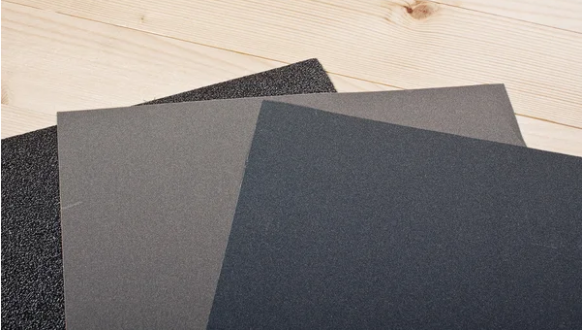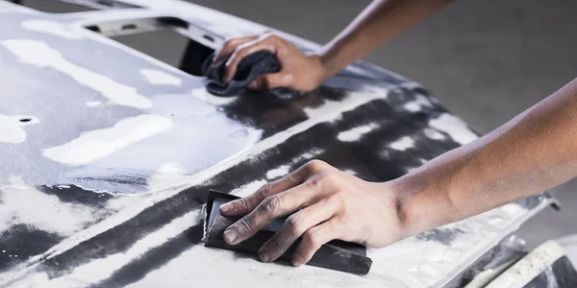When it comes to sanding surfaces, whether for woodworking, metalworking, or other DIY projects, using the right type of sandpaper can significantly impact the quality of the finished product. Two commonly used types of sandpaper are dry sandpaper and water sandpaper. Each has its unique characteristics and advantages, catering to specific applications. In this article, we will explore the main differences between dry sandpaper and water sandpaper, shedding light on their individual benefits and best practices for their use.
Composition and Material
- Dry Sandpaper:
Dry sandpaper is traditionally made using a strong paper backing that is coated with abrasive particles, such as aluminum oxide, silicon carbide, or garnet. The abrasive particles are adhered to the paper using an adhesive. The type and size of the abrasive particles determine the coarseness or grit of the sandpaper.
- Water Sandpaper:
Water sandpaper, also known as wet/dry sandpaper, follows a similar structure to dry sandpaper. However, water sandpaper is constructed to withstand exposure to water and other liquids during sanding. The adhesive used in water sandpaper is specially formulated to maintain its integrity and hold the abrasive particles in place even when soaked in water.
Usage Environment
- Dry Sandpaper:
Dry sandpaper is primarily used in situations where water is not feasible or could be detrimental to the project. It is commonly employed in woodwork, metalwork, and automotive applications. Dry sandpaper is highly effective for shaping and smoothing surfaces, removing paint or varnish, and preparing surfaces for finishing.
- Water Sandpaper:
Water sandpaper, as the name suggests, is designed for wet sanding applications. It is used with water or other liquids to reduce friction and heat during sanding. This prevents clogging and prolongs the lifespan of the sandpaper, making it ideal for fine finishing and achieving a smoother surface. Wet sanding is commonly used in automotive detailing, wood finishing, and surface repair tasks.
Sanding Performance
- Dry Sandpaper:
Dry sandpaper provides excellent cutting action due to the higher friction generated during sanding. It is best suited for aggressive material removal and shaping tasks. However, it tends to produce more dust and debris, which can be a drawback, especially in indoor environments.
- Water Sandpaper:
Water sandpaper excels in providing a smoother and more refined surface finish compared to dry sandpaper. The presence of water helps to wash away the removed material, preventing clogging and ensuring consistent abrasion. This method also generates less dust, making it a preferred choice for projects requiring precision and a clean working environment.
Heat Generation and Lubrication
- Dry Sandpaper:
Dry sanding generates more heat due to the higher friction between the abrasive particles and the surface being sanded. This can cause the sandpaper to wear out faster and may lead to surface damage if not used carefully. In some cases, excessive heat can also damage the material being worked on, especially sensitive materials like plastics.
- Water Sandpaper:
Wet sanding significantly reduces heat build-up during the sanding process. The water acts as a lubricant, cooling the abrasive particles and the surface, minimizing the risk of overheating and surface damage. This makes water sandpaper the preferred choice for working on delicate materials or achieving a fine, scratch-free finish.
Dust and Particle Management
- Dry Sandpaper:
Dry sanding produces a substantial amount of dust and debris, which can be harmful when inhaled and can also obscure the work area. Proper dust extraction or wearing appropriate respiratory protection is essential when using dry sandpaper.
- Water Sandpaper:
Wet sanding produces considerably less dust, as the water traps the particles and prevents them from becoming airborne. This contributes to a cleaner and safer working environment, reducing health risks and the need for extensive dust extraction systems.
Conclusion
In conclusion, dry sandpaper and water sandpaper are two distinct tools with specific applications in various industries and DIY projects. Dry sandpaper is well-suited for aggressive material removal and shaping, but it generates more dust and heat. On the other hand, water sandpaper provides a smoother finish, reduces the risk of surface damage, and creates less dust. The choice between dry and water sandpaper depends on the project’s requirements, the material being worked on, and the desired surface finish. Both types have their merits and should be used in accordance with the specific needs of the task at hand to achieve optimal results.



